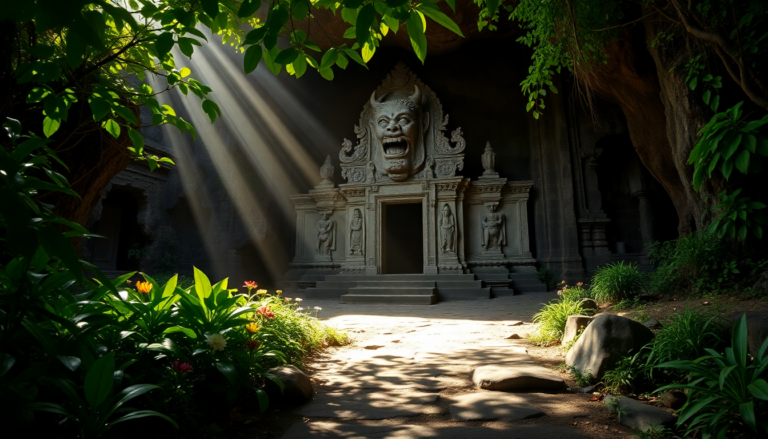Argomenti trattati
Nestled deep within the lush jungles of Bali, Goa Gajah, or the Elephant Cave, invites visitors to explore its captivating history and serene spirituality. As you approach this stunning 9th-century temple, the air is thick with the whispers of ancient rituals and the promise of tranquility. The entrance, adorned with a strikingly carved demonic visage, stands as a guardian to the secrets within, beckoning you to step into a realm where time seems to stand still. Have you ever wondered what stories lie behind such an enchanting facade?
A Glimpse into History
The origins of Goa Gajah are wrapped in mystery, yet it’s widely believed that this sacred site was established during the Warmadewa dynasty. This era was pivotal, showcasing a remarkable blend of Hindu and Buddhist influences on the island of Bali—a true spiritual melting pot. Imagine this place as a sanctuary for monks, a serene haven for meditation and reflection. Within its cool, shadowy depths lies a representation of Ganesha, the elephant-headed deity, alongside ancient symbols of lingam and yoni, beautifully illustrating the harmonious coexistence of these two spiritual traditions.
The name ‘Goa Gajah’ itself is thought to be inspired by the cave’s entrance, which features a massive face that some interpret as that of an elephant, while others see a fierce demon. This striking sculpture serves a dual purpose: to ward off malevolent spirits and to invoke divine protection. Adjacent to this entrance, a ceremonial bathing pool with six stone maidens pouring water reveals the ritualistic practices that have been held here for centuries, emphasizing the temple’s role in purification rites typical of Hindu ceremonies. Can you feel the energy of the rituals that have taken place here?
The Experience Within the Sacred Cave
As you step into the cave, the atmosphere transforms. The shadows envelop you, offering a cool reprieve from the tropical heat outside. Here, the presence of Ganesha and the ancient symbols invite you into a contemplative silence. It’s easy to imagine the devout monks who once sought solace within these walls, their breaths mingling with the echoes of centuries past. The cave, with its sacred aura, serves as a tangible connection to the spiritual practices that have endured through generations. What thoughts might cross your mind as you stand in this hallowed space?
Once you’ve soaked in the tranquility of the cave, step outside to the ritual bathing area. Here, the six stone figures continue their eternal task of pouring water—a reminder of the purification rites that have graced this site. The surrounding gardens, lush and peaceful, provide an idyllic backdrop for contemplation or photography. As you wander along the moss-covered paths, you may stumble upon small shrines and sculptures that enrich the experience, each telling its own story of devotion and history. Isn’t it fascinating how every corner of this temple has a tale to tell?
Visiting Goa Gajah: A Spiritual Pilgrimage
Located in the village of Bedulu, just 5 kilometers southeast of Ubud, Goa Gajah is easily accessible and surrounded by the enchanting landscapes of rice paddies and jungle. This sacred site not only offers a glimpse into Bali’s rich spiritual heritage but also allows for an immersive experience of the island’s natural beauty. Before entering, don’t forget to wear a sarong, as this temple remains an active site of worship and cultural significance. Are you ready to embrace this blend of history and spirituality?
As you leave Goa Gajah, carry with you the whispers of the past and the tranquility of the present. This sacred space invites you not only to witness its beauty but also to engage with the spiritual legacy it represents. In a world that often rushes by, here, time slows down, offering you the chance to savor the profound connection between nature, history, and the divine. What memories will you take with you from this extraordinary place?

